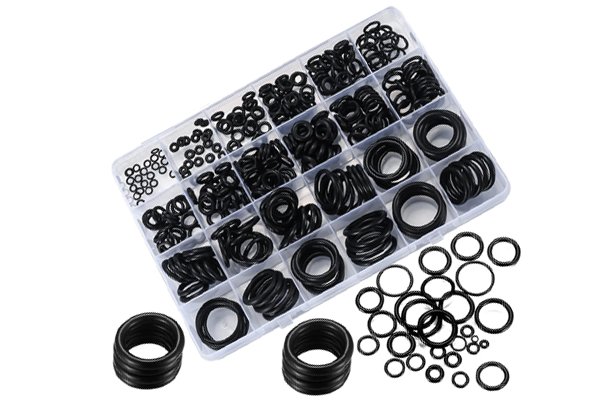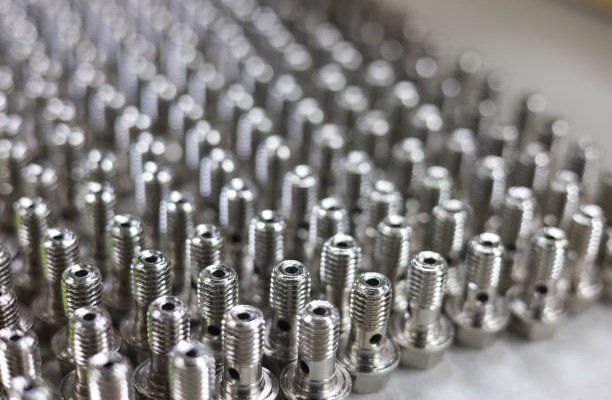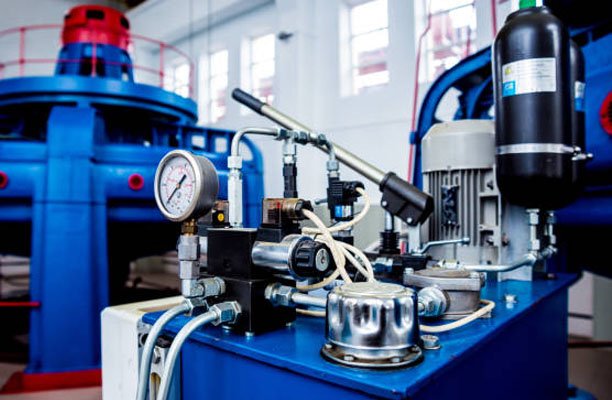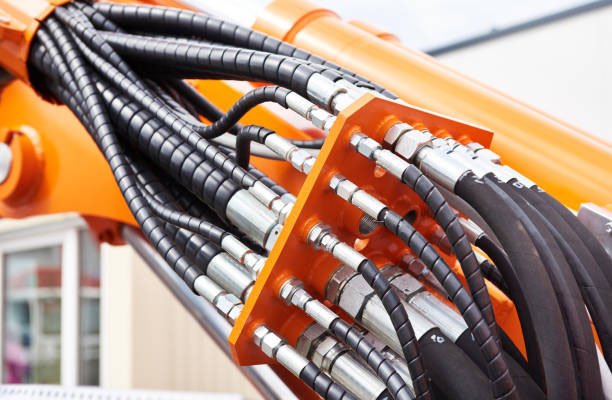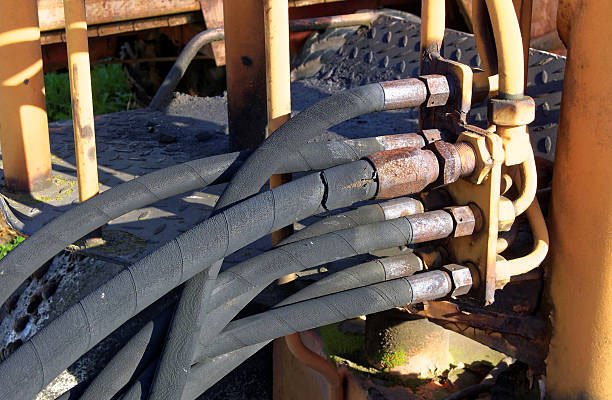Introduction
Hydraulic systems play a vital role in various industries, from heavy machinery to aerospace engineering. These systems rely on precise fluid control to function efficiently, and one of the most critical components ensuring their reliability is the O-ring. Acting as a sealing solution in hydraulic fittings, O-rings prevent fluid leaks and maintain optimal pressure levels.
Selecting the right O-ring material and understanding its lifespan is essential for enhancing system efficiency, reducing maintenance costs, and preventing unexpected failures. This article explores the different O-ring materials used in hydraulic fittings, the factors affecting their durability, and how to maximize their lifespan.
What Are O-Rings and Their Function in Hydraulic Systems?
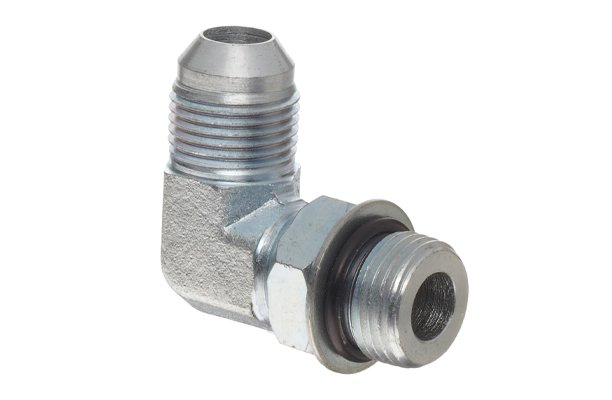
O-rings are circular elastomeric seals designed to sit in a groove and create a tight seal between two connecting surfaces. In particular, they play a crucial role in hydraulic systems, where they are primarily used in fittings, valves, and cylinders to effectively prevent fluid leakage and maintain pressure.
Key Functions of O-Rings in Hydraulic Fittings
- Sealing Against Leaks: O-rings provide a secure barrier against hydraulic fluid leaks, ensuring system efficiency.
- Pressure Retention: They help maintain consistent hydraulic pressure, crucial for performance.
- Vibration Dampening: O-rings absorb vibrations and minimize wear on metal components.
- Contamination Prevention: Properly fitted O-rings prevent external contaminants from entering the hydraulic system, reducing damage and wear.
Hydraulic O-rings must endure extreme conditions, including high pressures, temperature fluctuations, and exposure to aggressive fluids. Choosing the right material ensures longevity and reliability in demanding applications.
Types of O-Ring Materials Used in Hydraulic Fittings
The material of an O-ring determines its resistance to temperature, pressure, and chemical exposure. Here are the most commonly used materials in hydraulic systems:
1. Nitrile Rubber (NBR)
- Advantages: Excellent resistance to petroleum-based fluids, good wear resistance, and affordability.
- Common Applications: Industrial hydraulic systems, automotive applications, and fuel handling systems.
- Limitations: Poor resistance to ozone, sunlight, and extreme temperatures.
2. Fluorocarbon (Viton®)
- Advantages: High resistance to extreme temperatures (-20°F to 400°F), strong chemical resistance, and excellent compression set resistance.
- Common Applications: Aerospace, chemical processing, and high-temperature hydraulic systems.
- Limitations: Expensive compared to NBR, limited flexibility at low temperatures.
3. Silicone
- Advantages: Wide temperature range (-65°F to 450°F), excellent flexibility, and resistance to weathering.
- Common Applications: Aerospace hydraulic systems, food-grade applications, and medical equipment.
- Limitations: Poor wear resistance, not ideal for high-pressure environments.
4. Ethylene Propylene Diene Monomer (EPDM)
- Advantages: Excellent resistance to water-based hydraulic fluids, steam, and ozone exposure.
- Common Applications: Hydraulic systems using phosphate ester-based fluids, cooling systems.
- Limitations: Not compatible with petroleum-based fluids.
5. Polytetrafluoroethylene (PTFE)
- Advantages: Outstanding chemical resistance, extreme temperature tolerance (-328°F to 500°F), and low friction.
- Common Applications: High-pressure hydraulic systems, chemical plants, and aerospace applications.
- Limitations: Stiffer than rubber-based O-rings, requires precise installation.
Choosing the right material for your hydraulic O-rings ensures maximum performance, extended service life, and reduced maintenance costs.
Factors That Affect O-Ring Lifespan in Hydraulic Systems
O-rings are subjected to various environmental and operational factors that can impact their lifespan. Therefore, understanding these factors is essential, as it helps in choosing the right O-ring material and implementing maintenance strategies that can extend their durability.
1. Pressure and Temperature Fluctuations
- High-pressure conditions can cause O-ring extrusion, leading to seal failure.
- Extreme temperatures can cause hardening, cracking, or softening of the material.
- Selecting an O-ring with the appropriate durometer (hardness level) for the pressure conditions helps prevent damage.
2. Chemical Exposure
- Hydraulic systems use various fluids, including petroleum-based oils, water-based fluids, and synthetic lubricants.
- Some O-ring materials degrade when exposed to certain chemicals. For instance:
- NBR is resistant to petroleum-based fluids but deteriorates in ozone-rich environments.
- EPDM is great for water-based fluids but fails in petroleum-based applications.
- Ensuring material compatibility with hydraulic fluids extends O-ring lifespan.
3. Wear and Tear from Friction
- Repeated movement in dynamic applications (e.g., piston seals) causes frictional wear.
- High-speed operations generate heat, which can accelerate O-ring deterioration.
- Using lubrication and coatings like PTFE can reduce wear.
4. Improper Installation
- Incorrect sizing, twisting, or stretching an O-ring beyond its limits can lead to premature failure.
- Proper installation techniques, such as using O-ring assembly lubricants, prevent damage and ensure a secure fit.
How to Extend the Lifespan of O-Rings in Hydraulic Fittings
While O-rings naturally degrade over time, several strategies can prolong their service life and maintain hydraulic system efficiency.
1. Choose the Right Material for the Application
- Match the O-ring material to operating temperature, pressure, and chemical exposure.
- Consider specialty O-rings with reinforced coatings or high-performance elastomers for demanding environments.
2. Perform Regular Maintenance and Inspections
- Routinely check O-rings for cracks, deformation, or leaks.
- Replace worn O-rings before they fail to avoid costly system breakdowns.
- Use predictive maintenance techniques, such as fluid analysis, to detect early signs of seal degradation.
3. Use Proper Lubrication and Conditioning
- Apply compatible lubricants to reduce friction and wear.
- Avoid petroleum-based lubricants on O-rings made of EPDM or silicone, as they can degrade the material.
- Store O-rings in a cool, dark place away from ozone and UV exposure to prevent premature aging.
4. Follow Correct Installation Procedures
- Ensure proper sizing by selecting an O-ring that fits the groove dimensions precisely.
- Avoid over-stretching or twisting during installation.
- Use specialized O-ring tools to prevent nicks and cuts that can lead to leaks.
Implementing these best practices ensures longer-lasting, high-performing O-rings in hydraulic fittings.
Signs of O-Ring Failure and Replacement Guidelines
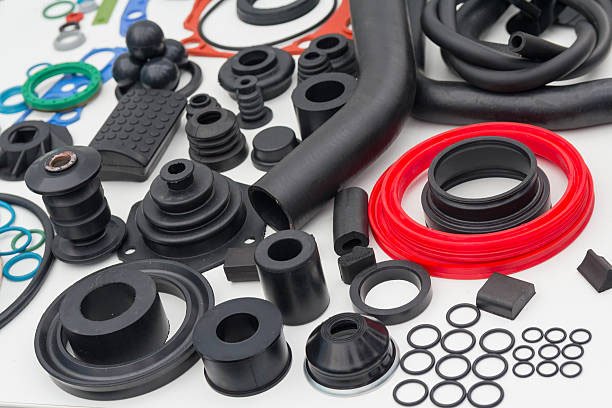
Identifying O-ring degradation early can prevent costly hydraulic system failures. Here are common signs that an O-ring needs replacement:
1. Visual Signs of Degradation
- Cracks and Brittleness – Common in O-rings exposed to UV light, heat, or ozone.
- Swelling or Softening – Caused by chemical incompatibility with hydraulic fluids.
- Flattening or Deformation – Results from extended compression without movement.
2. Symptoms of Hydraulic System Failure
- Hydraulic Fluid Leaks – If seals break down, fluid loss reduces system efficiency.
- Pressure Drops – A faulty O-ring causes loss of hydraulic pressure, leading to performance issues.
- Increased Friction and Heat – Indicates excessive wear on seals.
3. Best Practices for O-Ring Replacement
- Replace O-rings during scheduled maintenance to avoid unexpected breakdowns.
- Use genuine, high-quality O-rings instead of low-cost alternatives.
- Verify O-ring compatibility with hydraulic fluid and operating conditions before installation.
Innovations in O-Ring Technology for Hydraulic Systems
As industries demand more durable, efficient, and high-performance sealing solutions, manufacturers are constantly innovating to develop advanced O-ring technologies. Specifically, these innovations focus on material enhancements, smart monitoring, and specialized coatings in order to extend O-ring lifespan and improve reliability.
1. High-Performance Elastomers
- New elastomer blends offer superior resistance to heat, chemicals, and pressure.
- Materials like perfluoroelastomers (FFKM) provide extreme resistance to aggressive fluids, making them ideal for aerospace and chemical processing applications.
- Hydrogenated Nitrile Butadiene Rubber (HNBR) offers better thermal and oil resistance than standard NBR O-rings.
2. Smart O-Rings with Wear Indicators
- Emerging technology integrates color-changing wear indicators into O-rings.
- These indicators signal degradation before failure, allowing for proactive maintenance.
- Such advancements reduce downtime and improve overall system efficiency.
3. Coated O-Rings for Enhanced Durability
- O-rings with PTFE, graphite, or nano-coatings experience less friction and longer wear life.
- Coatings reduce stick-slip effects, making them ideal for dynamic applications like hydraulic cylinders and pumps.
By integrating these advanced O-ring technologies, industries can achieve greater efficiency, reliability, and cost savings in hydraulic systems.
Conclusion
O-rings play a critical role in hydraulic fittings by ensuring fluid containment, pressure stability, and system efficiency. However, choosing the right material, maintaining proper installation, and implementing regular maintenance are key to extending their lifespan and preventing failures.
By understanding the impact of pressure, temperature, and chemical exposure, industries can make informed decisions when selecting optimized O-rings that offer superior performance. Moreover, with ongoing advancements in elastomer technology, smart monitoring, and coated solutions, the future of O-rings in hydraulic applications continues to evolve toward greater
Regular inspections and timely replacement are essential to maintaining the reliability of hydraulic systems, reducing downtime, and ensuring optimal performance.
FAQs
1. What is the best O-ring material for high-pressure hydraulic fittings?
Fluorocarbon (Viton®) and PTFE are among the best options for high-pressure hydraulic fittings due to their high-temperature and chemical resistance. However, for extremely high-pressure applications, reinforced HNBR or FFKM O-rings may be required.
2. How often should O-rings in hydraulic systems be replaced?
The replacement frequency depends on operating conditions, material type, and environmental factors. Regular inspections should be conducted, and O-rings should be replaced as soon as signs of wear, deformation, or leaks appear—typically every 6 months to 2 years, depending on usage.
3. Can I use a universal O-ring for all hydraulic fittings?
No, O-rings should be specifically chosen based on the hydraulic fluid, temperature, and pressure conditions. Using an incompatible O-ring can result in rapid degradation, leaks, and system failure.
4. What are the most common reasons for O-ring failures?
O-rings fail due to:
- Chemical incompatibility (degradation from hydraulic fluids).
- Improper installation (twisting, stretching, or incorrect sizing).
- Extreme temperature and pressure fluctuations (causing hardening or extrusion).
- Lack of lubrication, leading to excessive friction and wear.
5. Are there eco-friendly alternatives for traditional O-rings?
Yes, manufacturers are developing biodegradable elastomers and recyclable synthetic rubbers to reduce environmental impact. Additionally, longer-lasting high-performance O-rings help minimize waste and lower overall material consumption.

